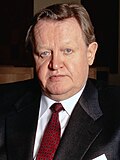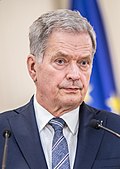This article needs additional citations for verification .(February 2012) |
 |
|---|
The president of Finland is Finland's head of state. Under the Constitution of Finland, executive power is vested in the president and the government, with the president possessing limited powers. Since 1994 no president may be elected for more than two consecutive terms. Presidents used to be elected indirectly, by an electoral college or by Parliament, but since 1994 the president has been elected directly by the people for a term of six years. The president must be a native-born Finnish citizen. The office was established by the Constitution Act of 1919. The current president is Alexander Stubb, since 1 March 2024.













